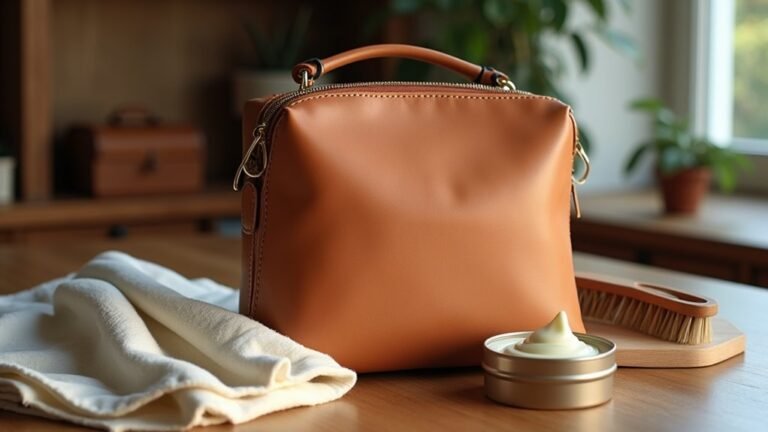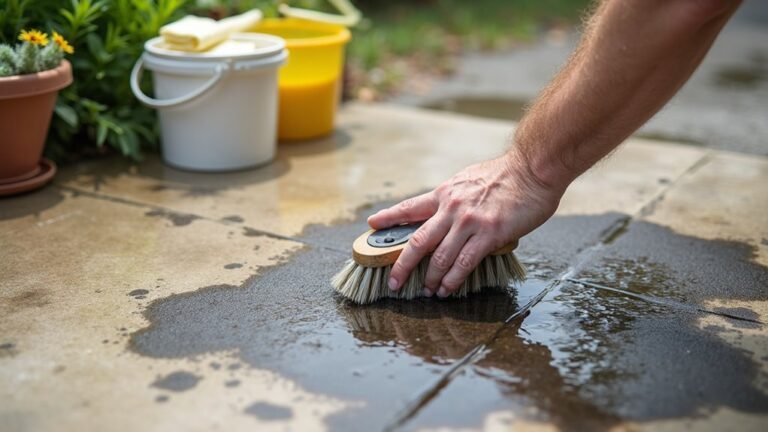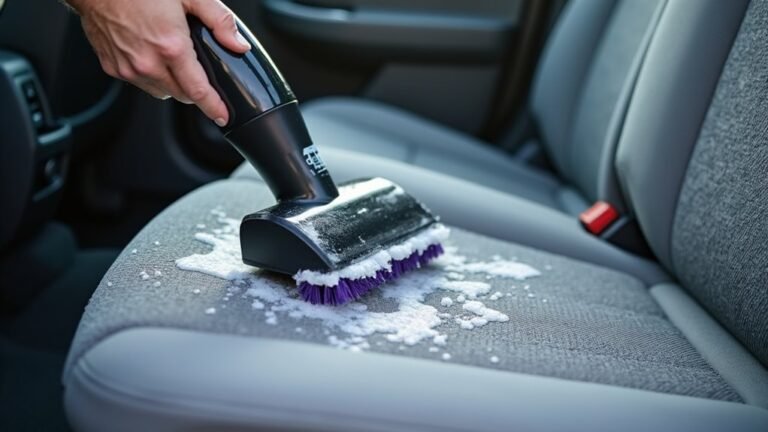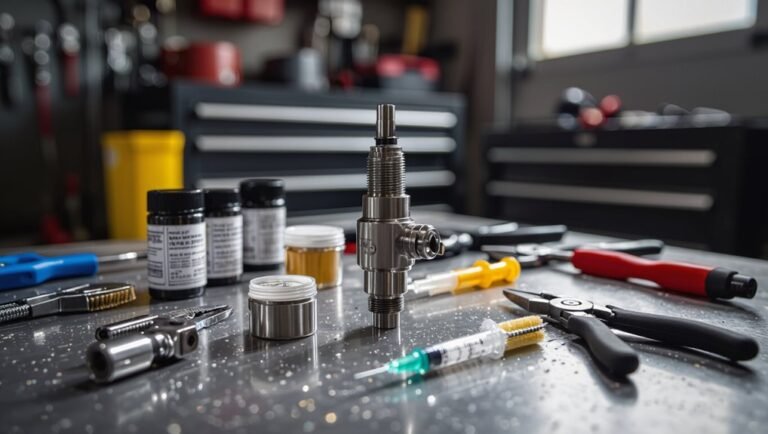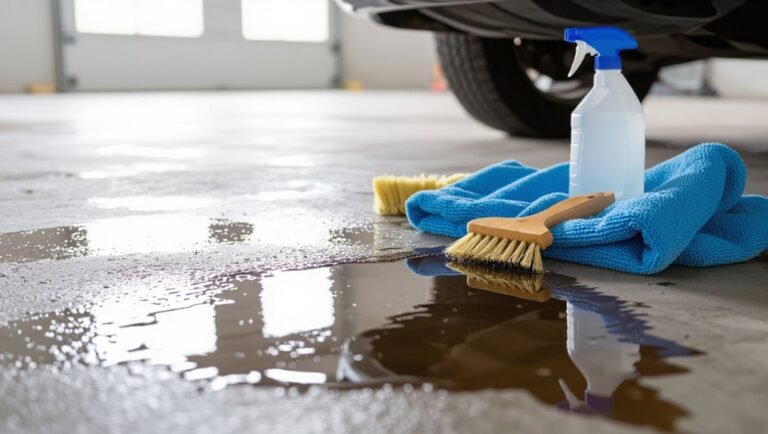Our leather car seats take a beating every day, and they need some care to stay looking good. While clean leather seats can make any car feel fancy, you can't just grab any cleaner and start scrubbing. According to Mike Pennington, Director of Training at Meguiar's, "The biggest mistake people make is using household cleaners on their leather seats. These can break down the protective coating and dry out the leather." Before we dive into how to clean them properly, it's important to know what helps – and what might ruin – your car's leather seats.
Some of the links in this article may be affiliate links. If you make a purchase through these links, we may earn a small commission at no extra cost to you. Thank you.
Premium Leather Requires Care

When you've invested in a vehicle with premium leather seats, regular maintenance isn't just a suggestion – it's essential for protecting your investment.
We recommend cleaning and conditioning your seats every 2-3 months to maintain appearance and prevent cracking.
Always use a gentle vacuum cleaner with a soft brush attachment first, then apply a chemical-free leather cleaner.
Remember to protect the leather with UV-resistant conditioner.
Let's look at what we need to do, and what we need to avoid, when cleaning our leather car seats to keep them looking their best.
When cleaning leather seats, we'll want to follow specific steps like vacuuming first and using the right cleaning solutions, while avoiding common mistakes such as oversaturating the leather or using harsh chemicals.
We'll guide you through the proper techniques that'll help maintain your leather seats' appearance and extend their lifespan through regular care and conditioning.
Things to Do When Cleaning Leather Car Seats
Keeping your leather car seats clean and well-maintained is essential for preserving their appearance and extending their lifespan. A proper cleaning routine involves multiple steps that must be performed carefully to avoid damaging the leather while effectively removing dirt, oils, and other contaminants that accumulate over time.
- Remove Large Debris – Clear away any visible items like crumbs, paper, or other loose materials to prevent scratching during cleaning.
- Vacuum Thoroughly – Use appropriate attachments to remove dust and small particles from all surfaces and crevices.
- Spot Test – Apply cleaner to a hidden area first to verify compatibility with your leather.
- Clean with Solution – Gently scrub using a soft brush and appropriate leather cleaner applied to a microfiber cloth.
- Wipe Down – Remove cleaning residue with a slightly damp microfiber cloth, ensuring no excess moisture remains.
- Dry Completely – Allow seats to dry naturally, ensuring no moisture is trapped in seams or crevices.
- Condition – Apply leather conditioner in circular motions to protect and maintain the leather's natural oils and flexibility.
Things to Avoid When Cleaning Leather Car Seats
Maintaining leather car seats requires careful attention to cleaning methods and products to prevent damage to this luxurious material.
While it may be tempting to use common household cleaners or DIY solutions, using the wrong products can lead to permanent damage, discoloration, or deterioration of your leather seats.
- Bleach and ammonia cleaners – These harsh chemicals break down leather fibers and cause severe discoloration.
- Homemade acidic solutions – Lemon juice or cream of tartar can deteriorate leather due to their high acidity.
- Petroleum-based products – These clog leather pores, preventing natural breathability and leading to cracking.
- Excess moisture – Too much water or cleaning solution can seep into the leather, causing mold and structural issues.
- Stiff-bristled brushes – Hard bristles create scratches and abrasions on the leather's delicate surface.
- All-purpose cleaners – Generic cleaners contain chemicals that can strip leather's natural oils and protective coating.
Steps
Proper leather car seat cleaning requires careful attention to detail and the right techniques to maintain the material's quality and appearance.
The process involves multiple steps that help remove dirt while protecting the leather from damage, ensuring your seats remain pristine and well-maintained for years to come.
Step 1: Vacuum the leather seats thoroughly, removing all loose dirt and debris from surfaces and crevices.
Step 2: Test the leather cleaning solution on a small, hidden area to check for adverse reactions.
Step 3: Apply leather cleaner with a soft-bristled brush using gentle circular motions.
Step 4: Work the cleaner into the leather to remove embedded dirt and stains.
Step 5: Remove cleaning solution with a damp microfiber cloth, ensuring no excess moisture remains.
Step 6: Apply leather conditioner in small circular motions across all cleaned surfaces.
Step 7: Allow seats to air dry completely for at least one hour before use.
Final Thoughts
Although leather car seats require consistent attention and upkeep, the effort you invest in their care will pay off through enhanced comfort, appearance, and longevity.
When properly maintained with regular cleaning and conditioning, your leather seats can last for many years.
Remember to remove dirt regularly with a damp cloth, apply a cleaning solution carefully, and deep clean every few months with a leather conditioner.

Taking proper care of your leather car seats is a worthwhile investment that pays off in both appearance and resale value. Regular cleaning and conditioning every few months prevents costly damage and maintains that luxurious feel you love.
While the process requires attention to detail – from proper vacuuming to testing products and applying conditioner correctly – it's a manageable task that typically takes less than an hour.
Don't wait until your leather seats show signs of wear or damage. Start a regular maintenance routine now to protect your investment.
Your car's interior will stay fresh, comfortable, and beautiful for years to come. Schedule your first deep cleaning session today and give your leather seats the care they deserve.

